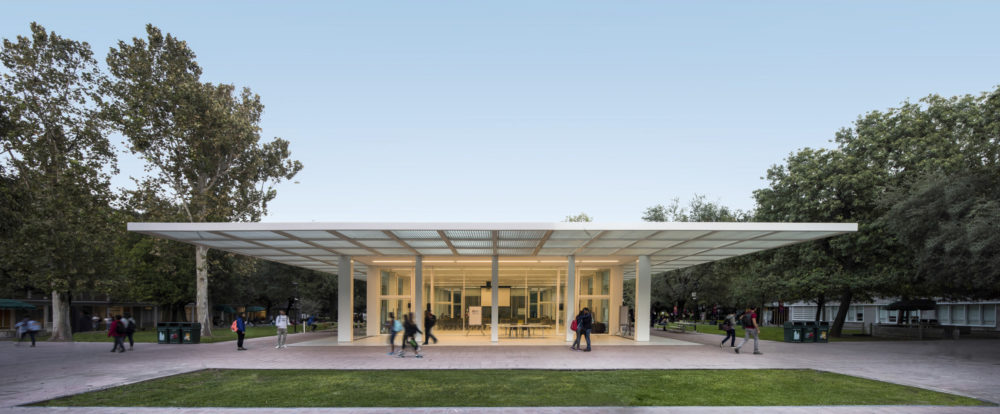A brand new collaboration habitat for the students of TEC and the greater Monterrey community
Tecnológico de Monterrey Expedition Building

View from Av Garza Sada
Positioned to become a leader in stimulating national urban and economic regeneration, Instituto Tecnológico de Monterrey (TEC) is proving the status of Latin American universities as major engines of innovation and entrepreneurship. The newest addition to TEC Monterrey, Expedition is a multidisciplinary learning space that promotes collaboration between students, industry professionals, and the greater Monterrey community, driving research that will focus on solving the most pressing issues of our times.
Instituto Tecnológico de Monterrey is on track to become one of the top 100 universities in the world, and is already the highest-ranked university in Latin America. In response to this trajectory, Sasaki completed an Urban Regeneration Plan for the TEC in 2014, establishing a framework for the long-term evolution of its main Monterrey campus. The plan creates an urban university environment that will attract significant research and development investment, while transforming the campus and its surrounding neighborhood into a dynamic and integrated Innovation District.
The first building born out of this plan is the Tecnológico de Monterrey Expedition Building. Aligned with the University’s ethos of Leading the Expedition Path, the building will foster a culture of innovation, entrepreneurship, and knowledge through key interdisciplinary research clusters tackling both local and global challenges.

Concept land use diagram of the Innovation Ecosystem

View from Garcia Roel Street
From Planning to Building
The construction of Expedition kicks off phase 2 of the urban regeneration plan, establishing itself as a foundational part of the TEC ecosystem. The building is located in the prominent southwestern parcel along the iconic Av. Eugenio Garza Sada Rotary and acts as a highly visible gateway into the new Innovation District.
Sited at the main entrance of the Tecnológico de Monterrey, the building is articulated to create a sense of journey, allowing visibility to its surrounding context. Both building and site are intimately connected to foster a unique experience inside and out.

Aerial view of Innovation Ecosystem concept massing
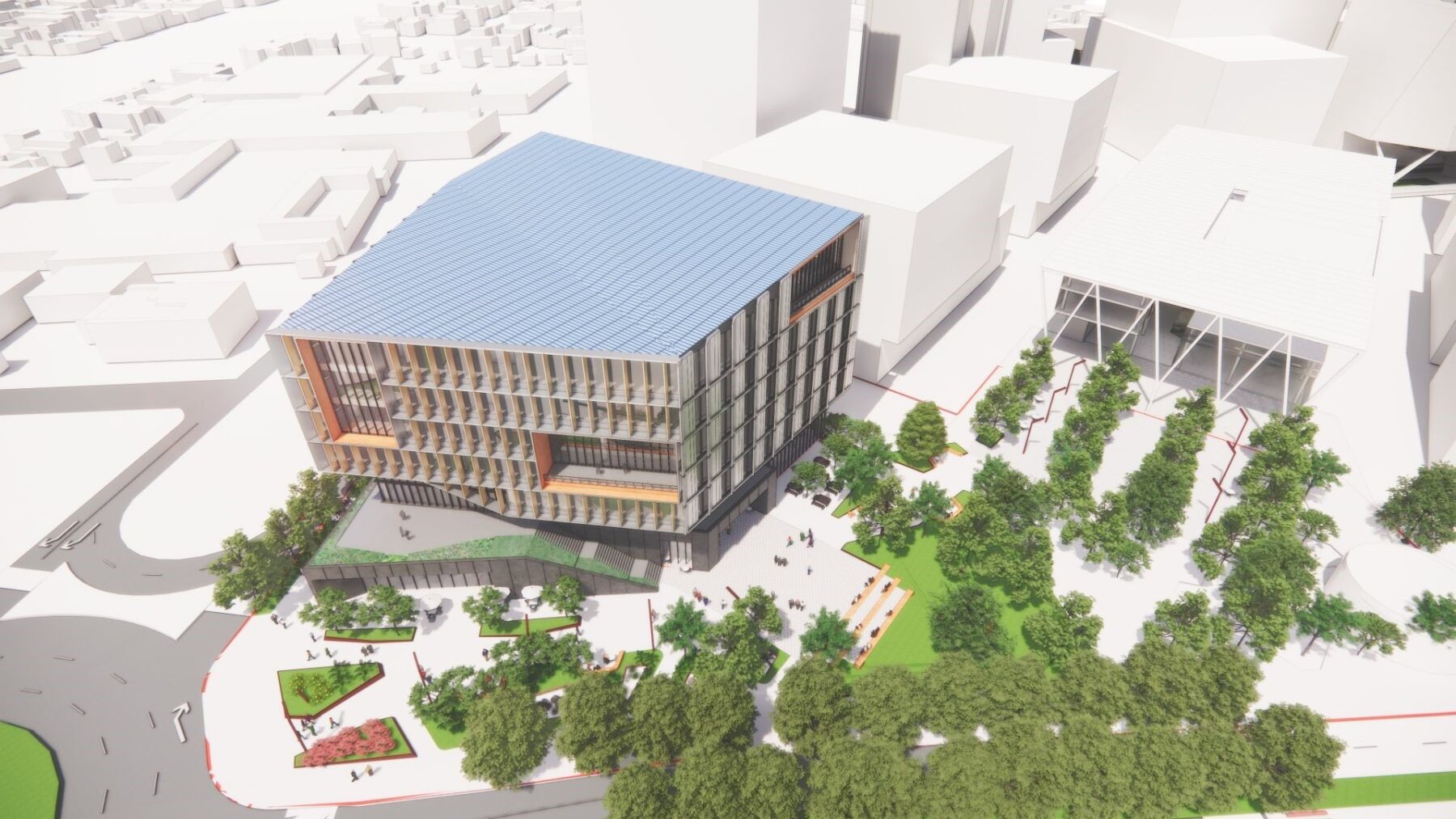
Aerial view of Expedition Building and plaza in context
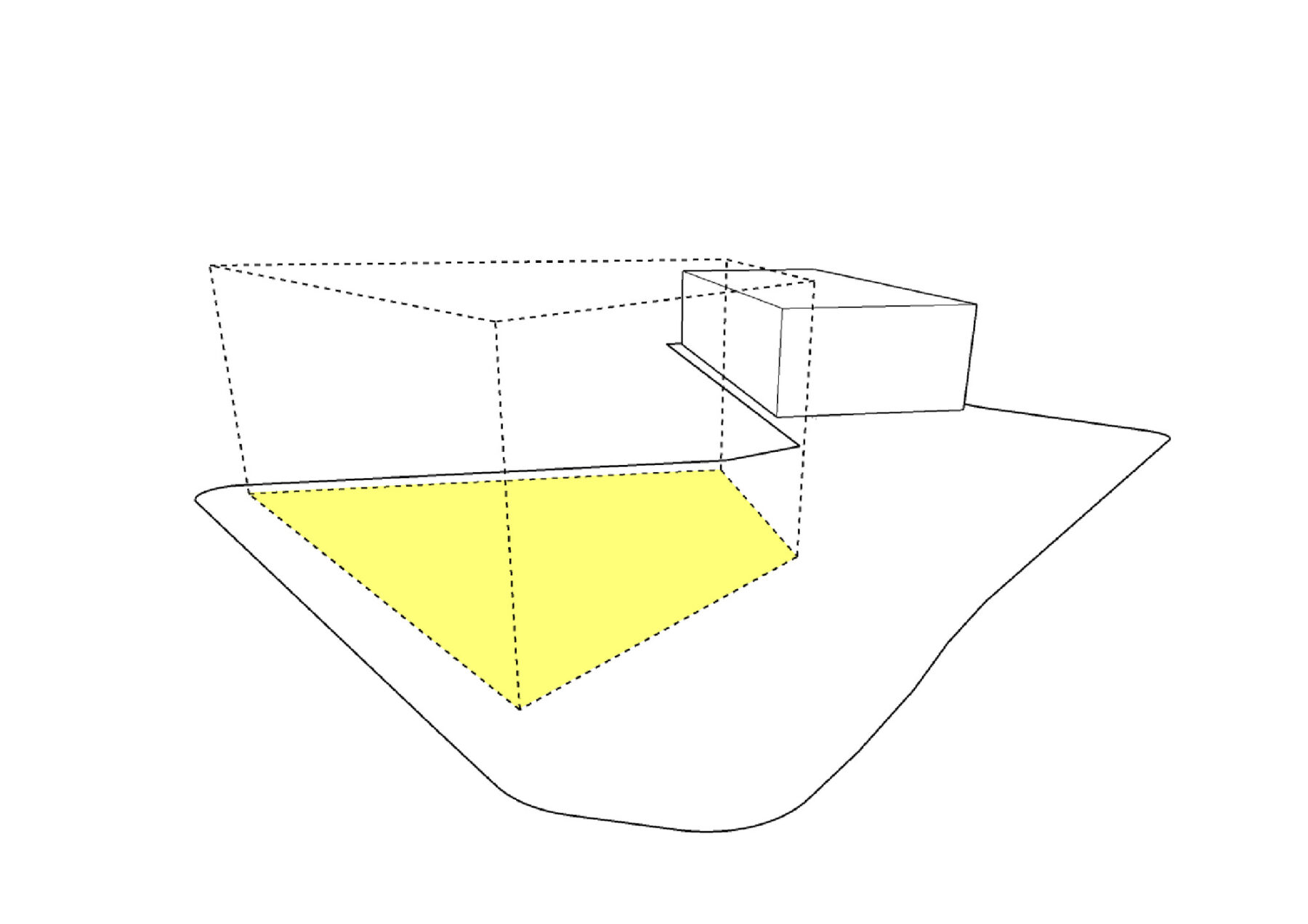
In order to maximize its development area, the building occupies 100% of its parcel boundary

The building form is manipulated within its massing envelope to optimize daylighting

The circulation infrastructure traces multiple possible journeys, encouraging the visibility of its activities
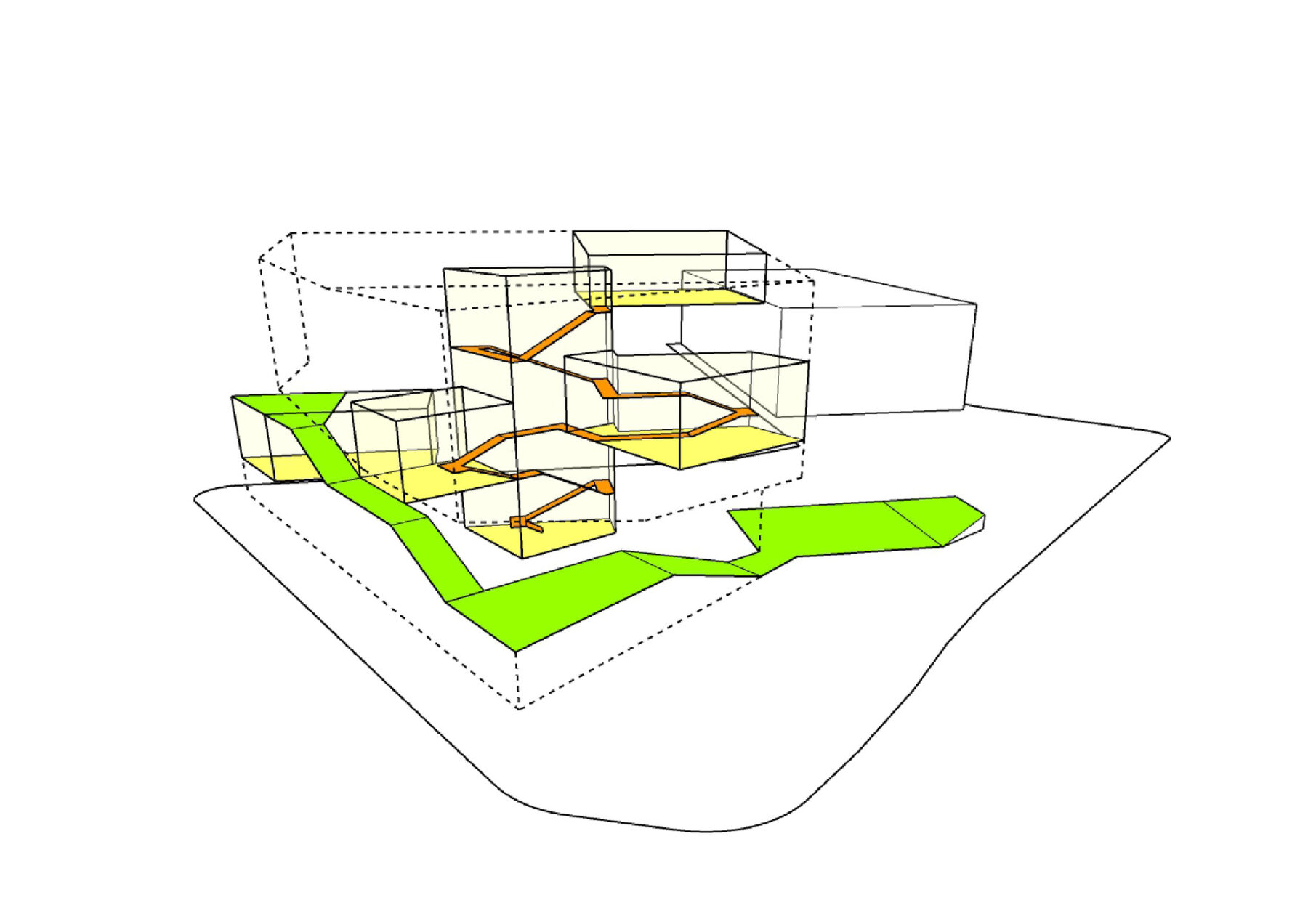
The Collaboration Habitat is tied to the circulation armature that travels through the building

Key program and social areas located at multistory connective spaces are framed as oversized windows and portals

A color palette associated with the Collaboration Habitat progresses across building levels giving distinct identity to the various hubs
In order to maximize its development area, the building occupies 100% of its parcel boundary
The building form is manipulated within its massing envelope to optimize daylighting
The circulation infrastructure traces multiple possible journeys, encouraging the visibility of its activities
The Collaboration Habitat is tied to the circulation armature that travels through the building
Key program and social areas located at multistory connective spaces are framed as oversized windows and portals
A color palette associated with the Collaboration Habitat progresses across building levels giving distinct identity to the various hubs
Phase 1: Core and Shell Design
The first phase of the building’s construction was focused on its core and shell. Instead of anchoring the building around a central, large atrium, the design distributes a series of smaller atriums across the building’s core in a “hop-scotch” fashion.
Materiality, color and scale play a significant role in the wayfinding of the project. The public circulation elements share the same material language, offering an intuitive wayfinding experience with moments of chance encounters to “design your own journey” and stumble upon spaces of preference. Each of the destination spaces carries a unique color identity that ties into the overall building color palette and provides a sense of place within the building.
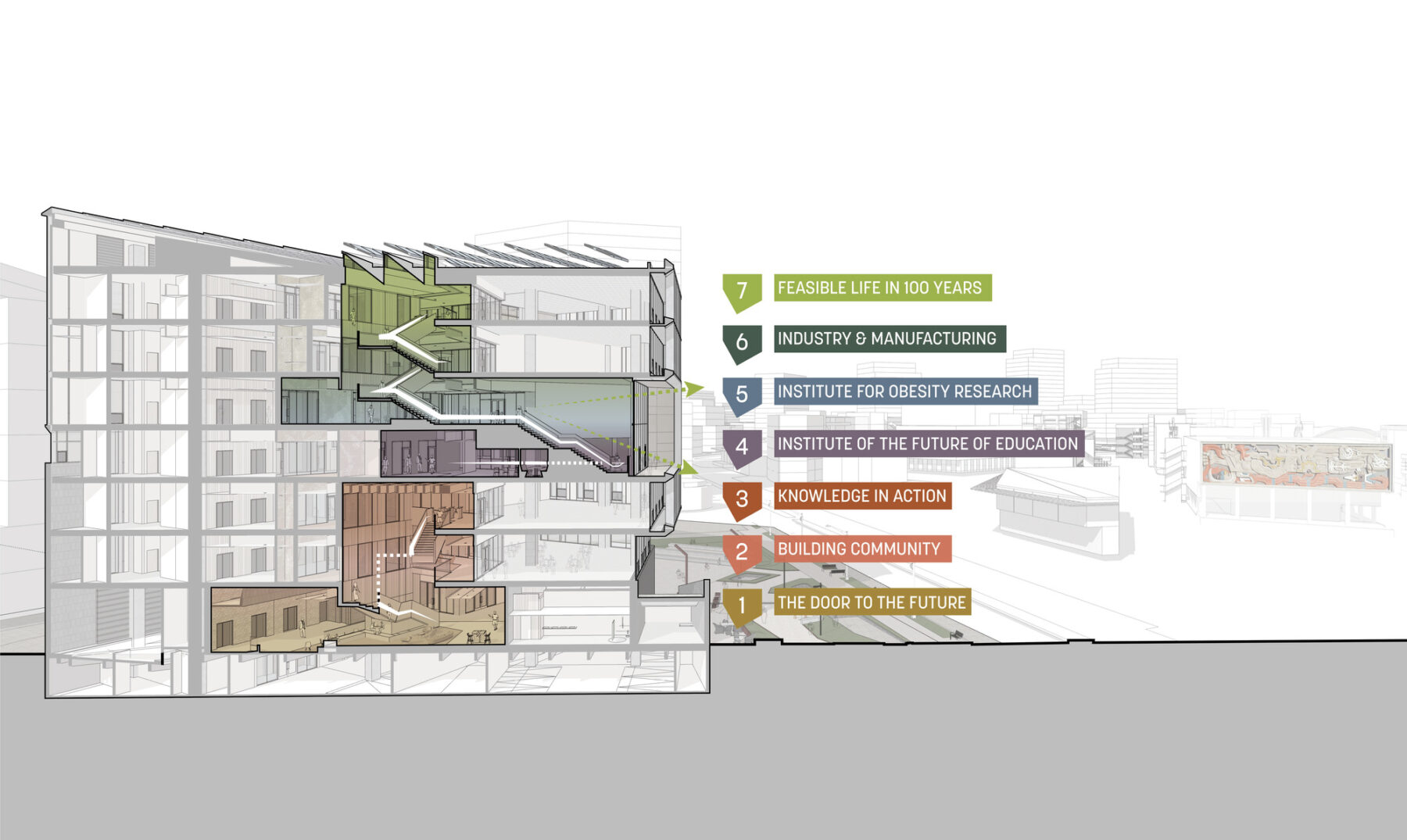
Cut away section through the building showing thematic threads per floor
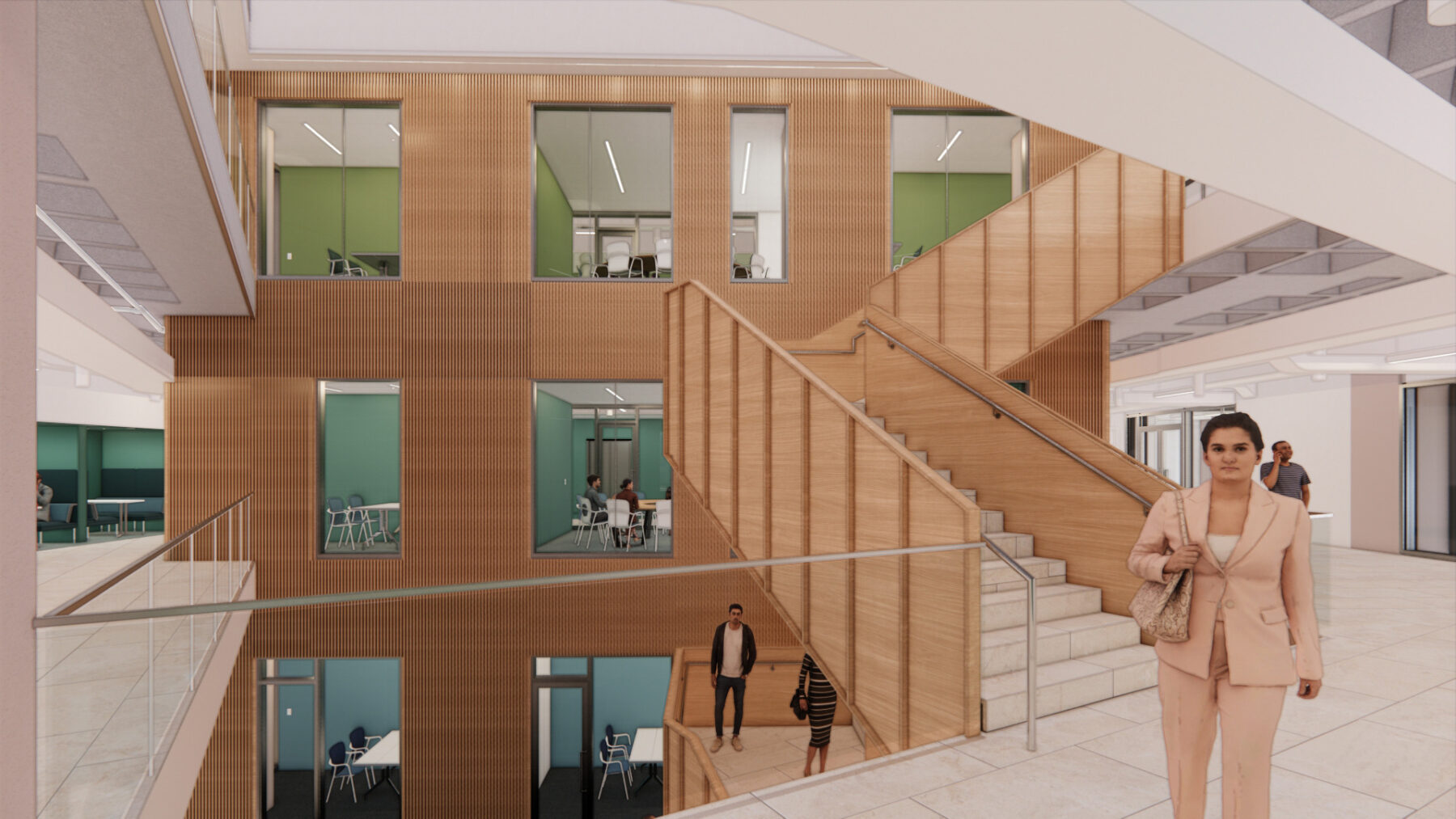
Views of central connective space and meeting spaces at Collaboration Habitat

The building’s shell can be distinguished by its massive footprint and irregular shape. Grounding the southwest corner of the Innovation District, the massing is broken into a solid base, a transparent middle, and a top that is articulated to serve as a sun shading device.
The solid base, cladded in a local volcanic stone and cementitious panels, houses most of the public programs and holds a series of terraces that carve the exterior journey of the building. The transparent middle acts as the transition from public to private and brings ample light in through the divide that separates the solid base from the articulated top.
The building top is expressed as the more vertical component of the building that ties the majority of the workspaces together with the spaces of the Collaboration Habitat, the building’s social space fabric. As a counterpoint to the podium, its materials are lighter in color and texture.

View of Western Elevation from Av Garza Sada
Environmental Optimization
In order to avoid a “purely glazed box” while optimizing the building envelope, the initial adjustments of the building massing in response to the plot’s solar orientation required articulation at a local level for each building façade. Carvings, projections and reoriented windows are tested as part of several iterations that balance factors like illumination, viewing and shading coefficients, heat gain, and glare.
The combination of all of these strategies together with the building’s wall systems and glass specification contribute to right-sizing heating and cooling infrastructure for the building as a whole.

Baseline massing and cladding scenario

Optimized massing and cladding scenario
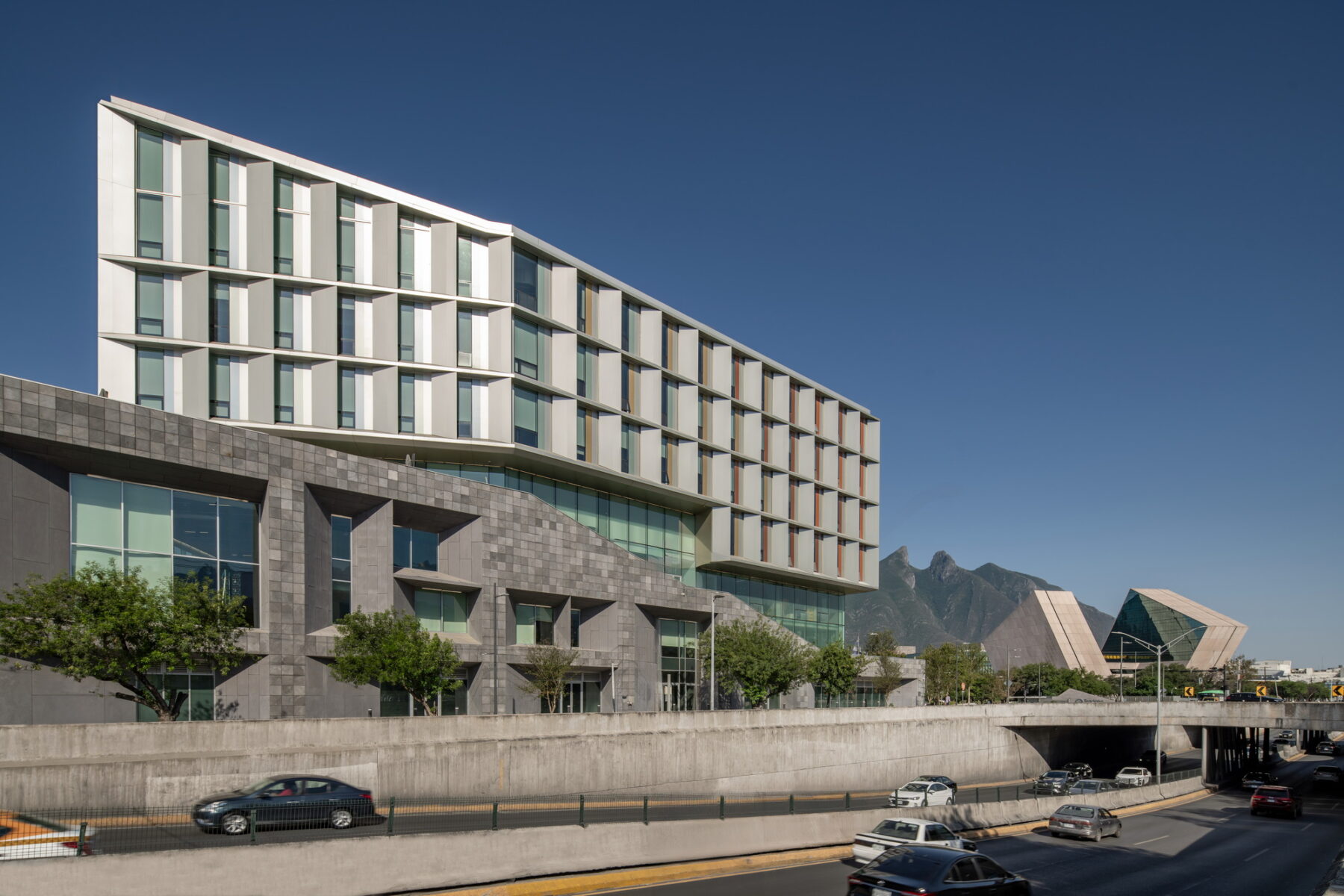
View of Northwest corner from Av Garza Sada
Phase 2: Interior Fit Outs & Unique Program
Sasaki developed a complex building program geared towards the campus’s main research entity with the overarching goal of scaling projects for emerging needs of the region and the country. These designated active zones offer a range of collaboration spaces and amenities while framing views to the iconic Cerro de La Silla mountain range, the Academic Campus, the future Innovation District, and the city beyond.
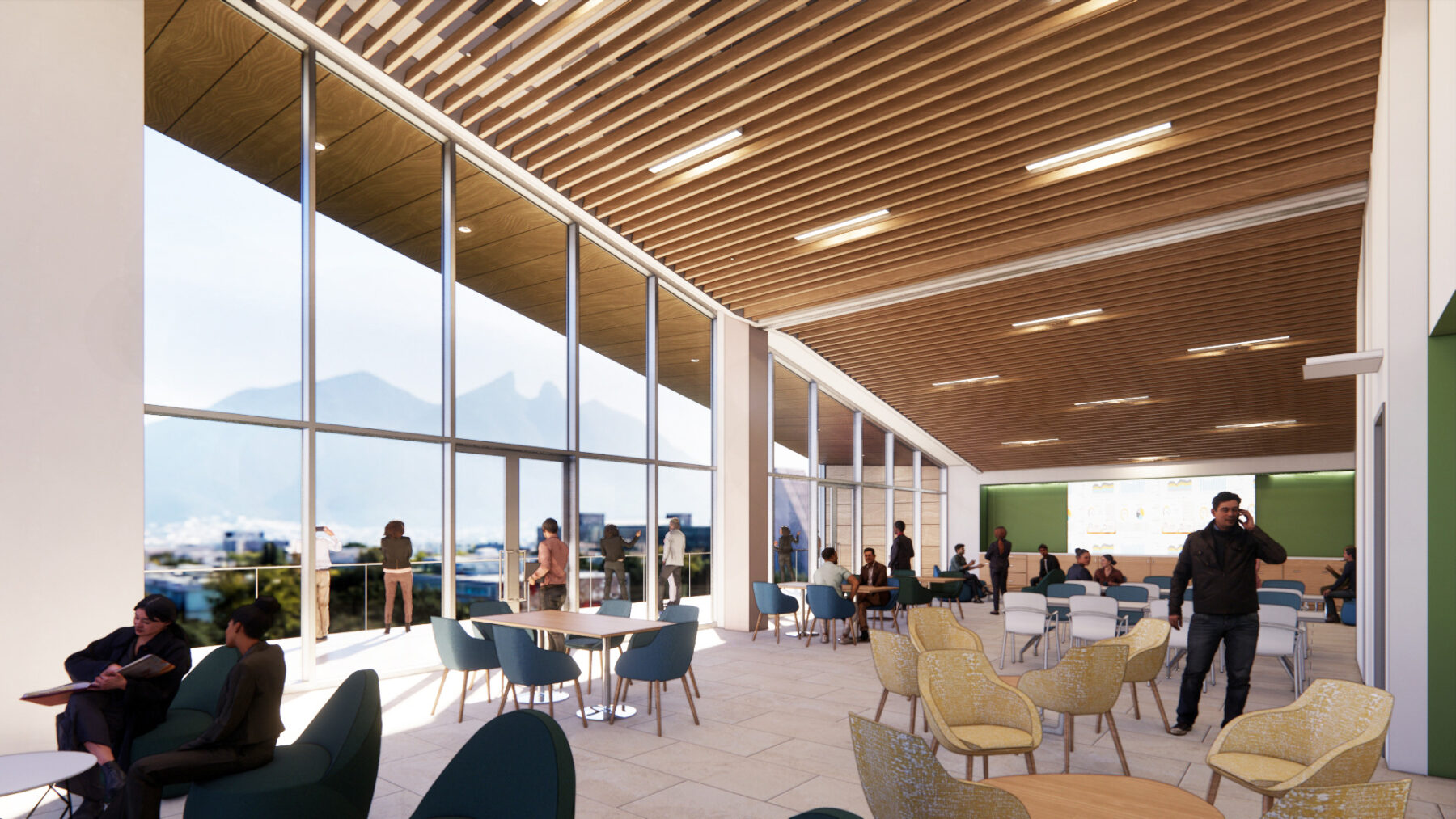
View of multipurpose room at level 7
A series of common spaces connect each of the program levels throughout the building. Of the seven levels, the first two will be open to the public with access to a full-service restaurant and cafe, an experimental gallery space, an incubator, and a maker space. Alternatively, levels three through seven will offer private, dedicated spaces specializing in knowledge generation and value for society.

Conscious Enterprises Center and Future of Cities
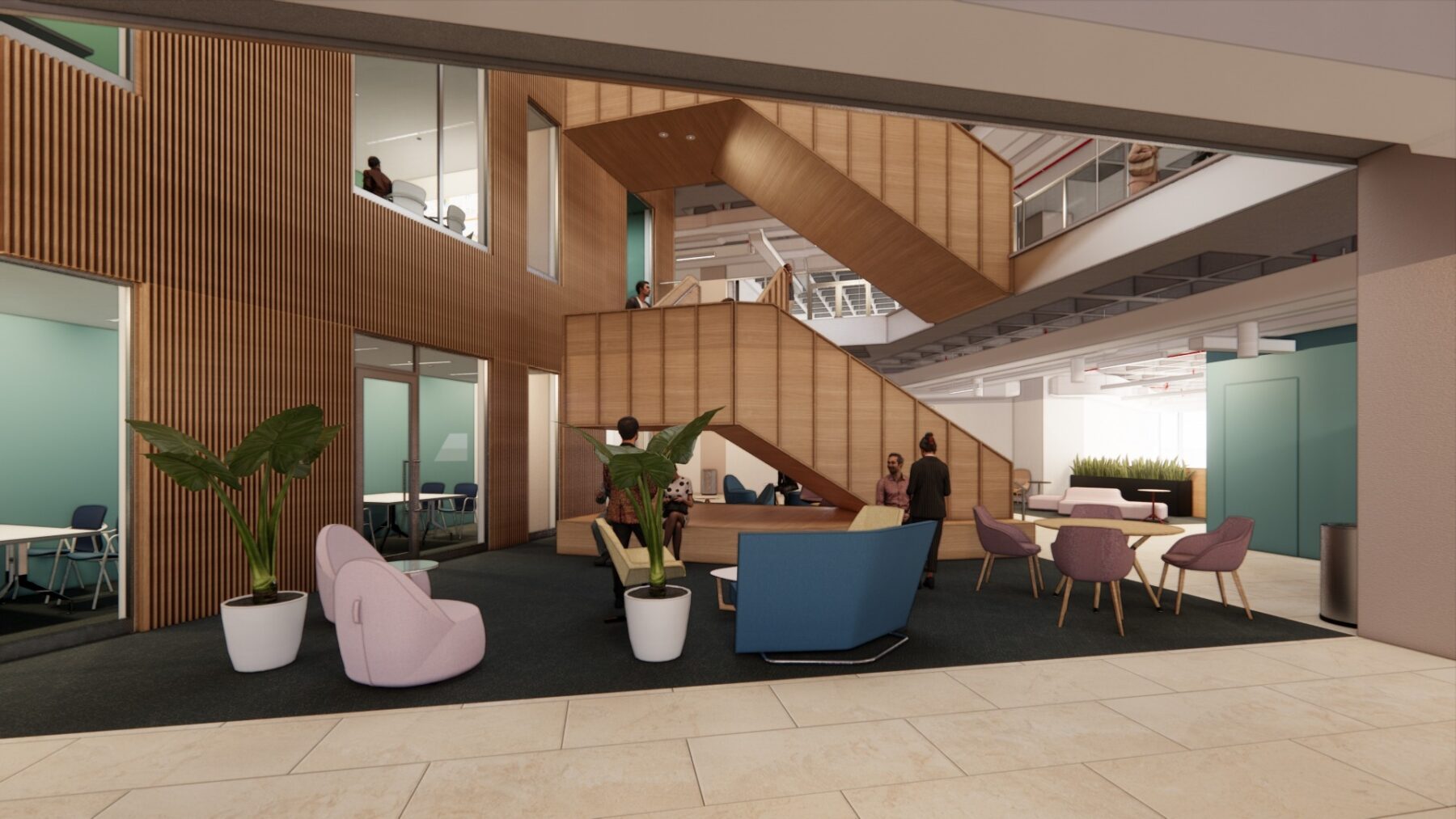
View of multistory connective space

View of Data Science and AI for Social Value Laboratory

View of multistory connective space
Conscious Enterprises Center and Future of Cities
View of multistory connective space
View of Data Science and AI for Social Value Laboratory
View of multistory connective space
Color
Color plays a significant role in the identity of both the interior and exterior of the building. The interior palette draws inspiration from the iconic mosaic mural that encompasses the west façade of the Rectoria Building on campus, renovated by Sasaki in 2020. As you move vertically throughout Expedition, a gradient of tones grounds each floor and ties together the larger themes that host the different program elements.
Expedition’s exterior color palette draws inspiration from a set of mosaic murals from the interior of the Rectoria Building. The design uses the faceted relief mural as a modern horizontal mosaic that unveils a new gradient of tones from east to west.

Color palette references from Rectoria’s exterior and interior murals

Color accents on South-facing façade screen
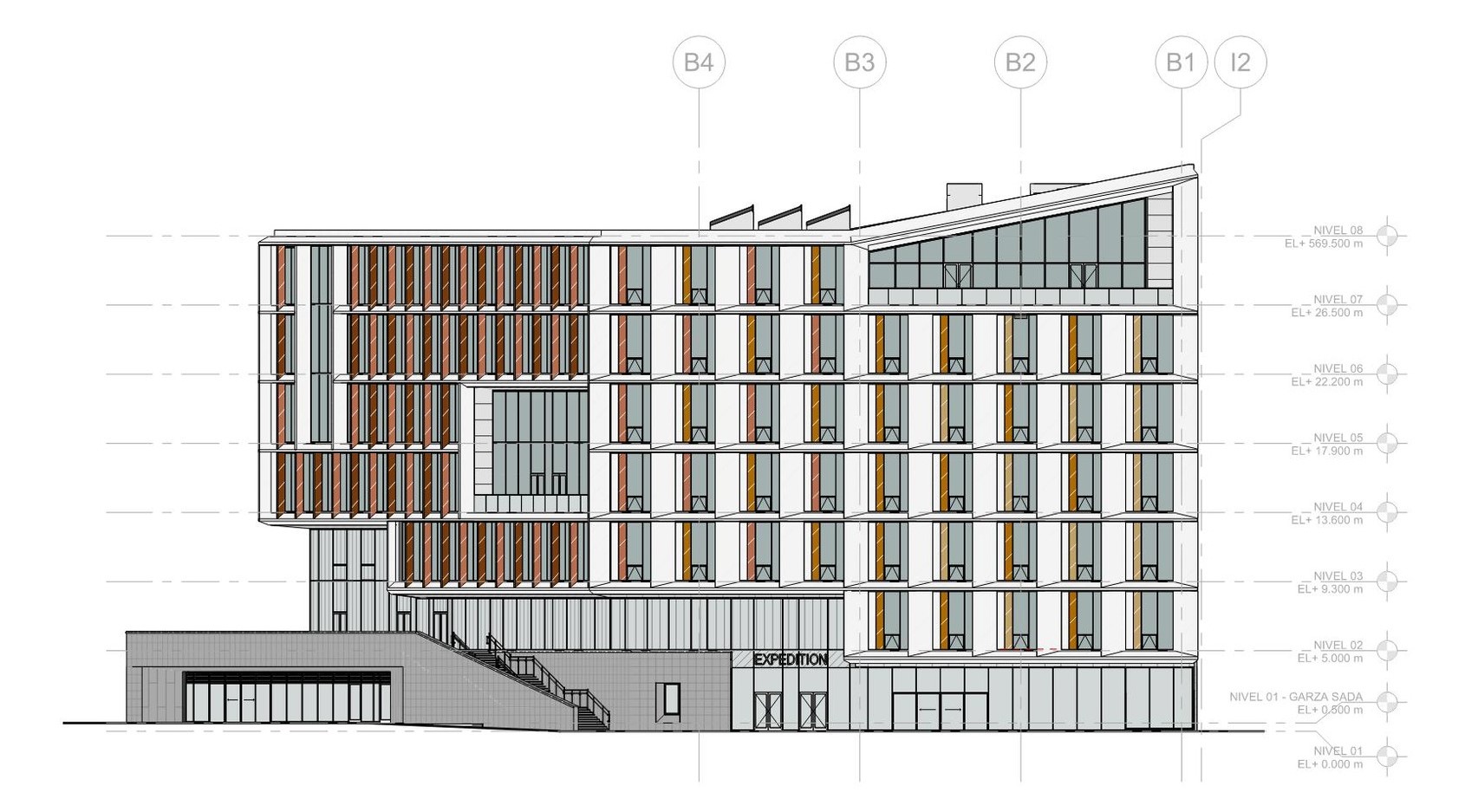
South and East Elevation

Façade assembly color and details
The first of two Sasaki-led buildings born out of the 2014 Tecnológico de Monterrey Urban Regeneration Plan, Expedition was completed at the end of 2024, and will be followed by the construction of the Tecnológico de Monterrey Innovation Hub.
For more information contact Pablo Savid-Buteler.

